The office of Geoffrey Stott (1922-1982) and his wife Marcia (1925-1985), who married in 1949 and entered into architectural partnership together in 1955, was one of a number of successful husband-and-wife
practices to emerge and thrive in Melbourne in the mid-twentieth
century, along with those of John & Phyllis Murphy, Peter &
Dione McIntyre and John & Helen Holgar.
Born in Malvern on 6 January 1922, Geoffrey Harold Stott was a grandson of Sydney Stott, the businessman who imported Melbourne's first typewriters and later established Stott's Business College, which thrives more than a century later. Other members of the Stott family were pioneers in their fields, and Geoffrey's architectural inclinations were almost certainly influenced by his paternal aunt, Muriel Stott (1889-1985) who became one of Australia's first qualified female architects when she began private practice in Melbourne in 1917. Geoffrey would have retained little personal recollection of her, as she left in 1931 to travel to Europe, where she met a wealthy South African mining engineer, married him and settled permanently in Johannesburg. Muriel never completely severed her Australian roots; she returned several times and eventually bequeathed money and personal possessions to various family members in Melbourne. Her nephew Geoffrey commenced his own studies at the University of Melbourne, as he is recorded as a member of the Melbourne University Rifles from August 1940 until December 1941. He then enlisted with the RAAF and served with the 113th Air Sea Rescue Flight until November 1945, when he was discharged with the rank of Warrant Officer.
In December 1946, Stott became engaged to Marcia Elizabeth Stevens, a doctor's daughter from Kew and an alumnus of St Catherine's College, Toorak. The couple met while studying at the University of Melbourne, even though Marcia had only commenced her degree course in 1943, while Geoffrey was still serving with the RAAF. Both enrolled at the atelier in early 1947, with Geoffrey taking the special day course that was established for returned servicemen. Whilst completing her studies, Marcia worked in the office of Stephenson & Turner, where she had some important female role models, most notably Ellison Harvie, a partner in the firm who had then recently become the first woman elevated to fellowship of the RVIA.
Marcia had completed her university studies at the time of her marriage to Geoffrey in February 1949, and her degree was conferred on 23 April that year. She continued with Stephenson & Turner, and was still there when she was registered as an architect in June 1949. The following month, her scheme for a small gable-roofed house was accepted into the Age/RVIA Small Homes Service range as design T251. Her husband Geoffrey, meanwhile, remained at the atelier for another year. During that period, he also worked for Stephenson & Turner but, by the time that he applied for registration in December 1950, he had transferred to the office of Yuncken, Freeman Brothers, Griffiths & Simpson. His own degree was conferred four months later, in April 1951. Later that year, the couple travelled to London.
After the Stotts returned to Melbourne in early 1952, Marcia resumed her post with Stephenson & Turner. Geoffrey's professional activities remain unclear until the middle of 1953, when it was reported that he had commenced practice under his own name. In 1955, Marcia left Stephenson & Turner and joined her husband, forming the partnership of Geoffrey & Marcia Stott. The couple worked from home (initially, in an flat in East Melbourne) and could thus devote much time to the raising of their two sons, born in 1957 and 1959. In practice together, the Stotts specialised in residential projects, mostly located in the eastern and south-eastern suburbs. Many of these attracted attention in the popular journals and daily newspapers. By far their most celebrated design was a house in Toorak Road, South Yarra, which they designed and built for themselves in the early 1960s.
In later years, Marcia Stott's expertise in the field of residential design led her to related activities outside the realms of private architectural practice. By 1970, she had been appointed chairman of the Home Safety Division of the National Safety Council and, in that capacity, was invited to speak at at the Victorian Industrial Safety Convention, held at Monash University in June 1970. The following year, she spoke on a similar topic as part of a series of lectures organised by the National Safety Council. Such engagements appear to have paved the way for her further work as an educator. In 1978, she took a class in Domestic Design at the Council of Adult Education and, two years later, lectured in kitchen design at the Building Development Display Centre in East Melbourne.
Sadly, the Stotts' shared architectural career was cut short by their premature deaths, within a few years of each other, in the 1980s. Geoffrey died on 11 August 1982, aged sixty years; he was survived not only by his wife and their two sons, but also by his Aunt Muriel, the pioneer architect, then still living in South Africa. Muriel was informed of Geoffrey's death and, when she revised her will in 1984, bequeathed several items to her nephew's widow, including two pieces of jewellery and a book on eighteenth-century South African architecture. It is unknown if these items ever found their way to Australia, as both women died the following year. Marcia Stott, who died on 11 July 1985, was sixty years old; her late husband's aunt was 95.
Born in Malvern on 6 January 1922, Geoffrey Harold Stott was a grandson of Sydney Stott, the businessman who imported Melbourne's first typewriters and later established Stott's Business College, which thrives more than a century later. Other members of the Stott family were pioneers in their fields, and Geoffrey's architectural inclinations were almost certainly influenced by his paternal aunt, Muriel Stott (1889-1985) who became one of Australia's first qualified female architects when she began private practice in Melbourne in 1917. Geoffrey would have retained little personal recollection of her, as she left in 1931 to travel to Europe, where she met a wealthy South African mining engineer, married him and settled permanently in Johannesburg. Muriel never completely severed her Australian roots; she returned several times and eventually bequeathed money and personal possessions to various family members in Melbourne. Her nephew Geoffrey commenced his own studies at the University of Melbourne, as he is recorded as a member of the Melbourne University Rifles from August 1940 until December 1941. He then enlisted with the RAAF and served with the 113th Air Sea Rescue Flight until November 1945, when he was discharged with the rank of Warrant Officer.
In December 1946, Stott became engaged to Marcia Elizabeth Stevens, a doctor's daughter from Kew and an alumnus of St Catherine's College, Toorak. The couple met while studying at the University of Melbourne, even though Marcia had only commenced her degree course in 1943, while Geoffrey was still serving with the RAAF. Both enrolled at the atelier in early 1947, with Geoffrey taking the special day course that was established for returned servicemen. Whilst completing her studies, Marcia worked in the office of Stephenson & Turner, where she had some important female role models, most notably Ellison Harvie, a partner in the firm who had then recently become the first woman elevated to fellowship of the RVIA.
Marcia had completed her university studies at the time of her marriage to Geoffrey in February 1949, and her degree was conferred on 23 April that year. She continued with Stephenson & Turner, and was still there when she was registered as an architect in June 1949. The following month, her scheme for a small gable-roofed house was accepted into the Age/RVIA Small Homes Service range as design T251. Her husband Geoffrey, meanwhile, remained at the atelier for another year. During that period, he also worked for Stephenson & Turner but, by the time that he applied for registration in December 1950, he had transferred to the office of Yuncken, Freeman Brothers, Griffiths & Simpson. His own degree was conferred four months later, in April 1951. Later that year, the couple travelled to London.
After the Stotts returned to Melbourne in early 1952, Marcia resumed her post with Stephenson & Turner. Geoffrey's professional activities remain unclear until the middle of 1953, when it was reported that he had commenced practice under his own name. In 1955, Marcia left Stephenson & Turner and joined her husband, forming the partnership of Geoffrey & Marcia Stott. The couple worked from home (initially, in an flat in East Melbourne) and could thus devote much time to the raising of their two sons, born in 1957 and 1959. In practice together, the Stotts specialised in residential projects, mostly located in the eastern and south-eastern suburbs. Many of these attracted attention in the popular journals and daily newspapers. By far their most celebrated design was a house in Toorak Road, South Yarra, which they designed and built for themselves in the early 1960s.
In later years, Marcia Stott's expertise in the field of residential design led her to related activities outside the realms of private architectural practice. By 1970, she had been appointed chairman of the Home Safety Division of the National Safety Council and, in that capacity, was invited to speak at at the Victorian Industrial Safety Convention, held at Monash University in June 1970. The following year, she spoke on a similar topic as part of a series of lectures organised by the National Safety Council. Such engagements appear to have paved the way for her further work as an educator. In 1978, she took a class in Domestic Design at the Council of Adult Education and, two years later, lectured in kitchen design at the Building Development Display Centre in East Melbourne.
Sadly, the Stotts' shared architectural career was cut short by their premature deaths, within a few years of each other, in the 1980s. Geoffrey died on 11 August 1982, aged sixty years; he was survived not only by his wife and their two sons, but also by his Aunt Muriel, the pioneer architect, then still living in South Africa. Muriel was informed of Geoffrey's death and, when she revised her will in 1984, bequeathed several items to her nephew's widow, including two pieces of jewellery and a book on eighteenth-century South African architecture. It is unknown if these items ever found their way to Australia, as both women died the following year. Marcia Stott, who died on 11 July 1985, was sixty years old; her late husband's aunt was 95.
Select List of Projects
Marcia Stott
| 1949 | Residence for The Age/RVIA Small Homes Service (T251) |
Geoffrey & Marcia Stott
| 1955 1956 1957 1962 1965 1966 1968 1976 | Residence, Albert Jones Court, Eaglemont Residence, St Georges Crescent, Glen Iris Residence, Blythswood Court, Kew Residence for self, 391 Toorak Road, South Yarra Residence, Como Avenue, South Yarra Residence, St James Place, Toorak Residence, Surrey Road, South Yarra Residence, The Strand, Williamstown Residence, location unknown |
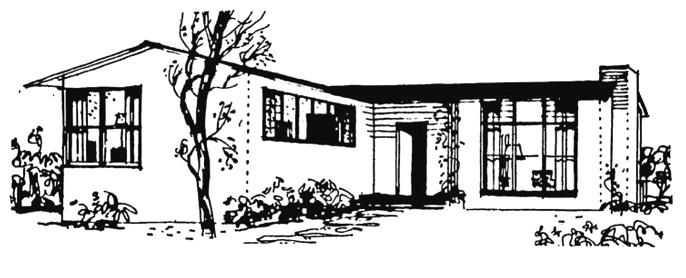 | |
| Small Homes Service plan T251 (Marcia Stott, 1949) |
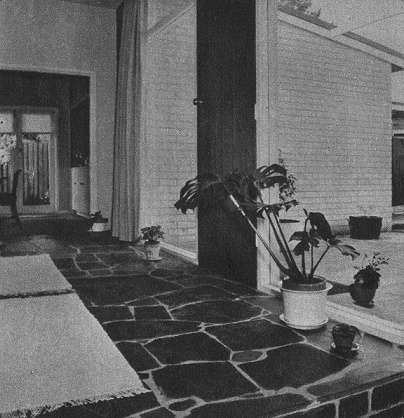 | |
| Residence, Kew (Geoffrey & Marcia Stott, 1958) |
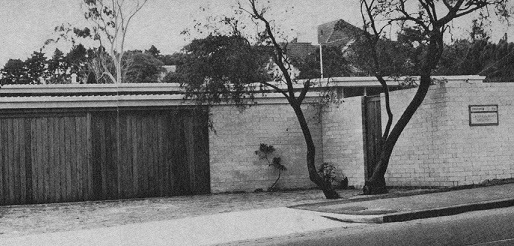 | |
| Residence for G & M Stott, Toorak Rd, South Yarra (1963) |
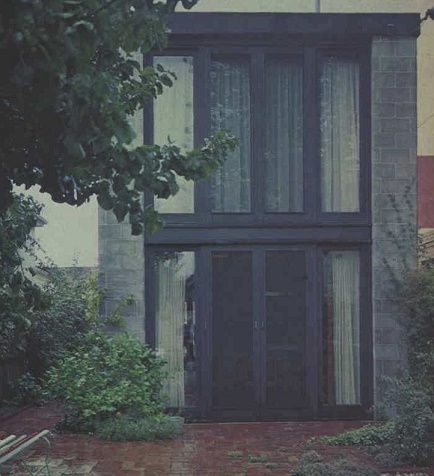 | |
| Residence, Toorak (Geoffrey & Marcia Stott, 1968) |
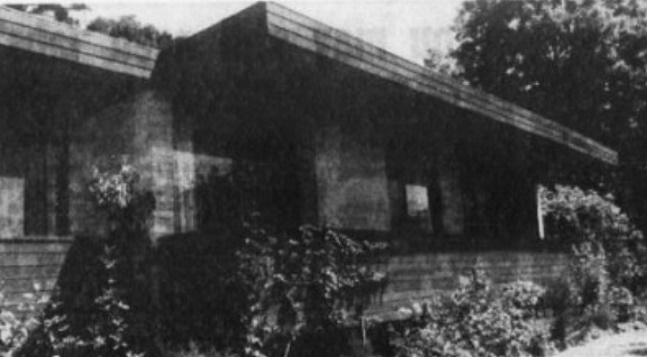 | |
| Residence (Geoffrey & Marcia Stott, 1976) |
| Select References | |
| Julie Willis & Bronwyn Hanna, Women Architects in Australia, 1900-1950 (2001). Julie Willis, 'Women in Architecture in Victoria, 1905- 1955', PhD Thesis, University of Melbourne, 1997 |
top
